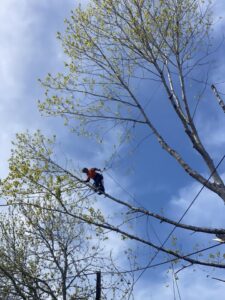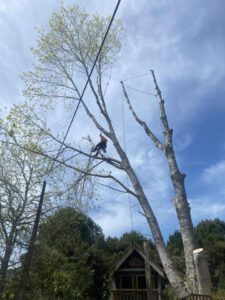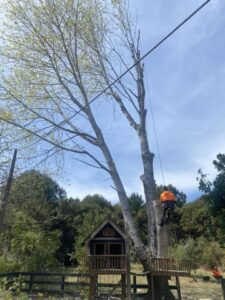


Why Prune Your Trees?
Health: Regular pruning removes dead, diseased, or damaged branches, preventing the spread of disease and encouraging healthy growth. It also allows better air circulation and sunlight penetration, which are crucial for the tree’s overall health.
Safety: Pruning reduces the risk of falling branches that could cause injury or property damage. It also helps maintain clearances around structures, power lines, and walkways.
Aesthetics: Pruning enhances the natural shape and beauty of trees, contributing to a well-maintained and attractive landscape.
When to Prune
According to Tree Removal North Shore specialist Narvin who also specialise in tree pruning, The best time to prune most trees is during their dormant season, usually late winter or early spring before new growth begins. This timing minimizes stress on the tree and reduces the risk of disease and pest infestation. However, some trees, like flowering species, may require pruning immediately after they bloom.
Tools You’ll Need
- Pruning Shears: For small branches up to ¾ inch in diameter.
- Lopping Shears: For branches up to 2 inches in diameter.
- Pruning Saw: For larger branches.
- Pole Pruner: For high branches that are out of reach.
- Protective Gear: Gloves, safety glasses, and a hard hat if necessary.
Step-by-Step Pruning Guide
1. Assess the Tree
- Begin by examining the tree for any dead, diseased, or damaged branches. Identify branches that cross or rub against each other, as well as those that are growing inward or downward.
2. Remove Dead, Diseased, or Damaged Branches
- Cut these branches back to the nearest healthy branch, trunk, or main limb. Make clean cuts just outside the branch collar (the swollen area where the branch meets the trunk) to promote proper healing.
3. Thin Out Crowded Branches
- Selectively remove branches to allow better light penetration and air circulation. Focus on removing branches that cross or rub against each other, as well as those that grow towards the center of the tree.
4. Trim for Shape and Structure
- For young trees, establish a strong central leader (the main upward-growing branch) and remove competing leaders. Shape the tree to maintain a balanced, natural form. For mature trees, maintain their shape by removing any wayward or overly long branches.
5. Make Proper Cuts
- When removing a branch, use the three-cut method to prevent bark tearing:
- Make the first cut on the underside of the branch, about 6-12 inches from the trunk.
- Make the second cut on the top side of the branch, a few inches beyond the first cut, to remove the branch.
- Make the final cut just outside the branch collar to remove the remaining stub.
6. Avoid Over-Pruning
- Never remove more than 25% of a tree’s canopy in a single year. Over-pruning can stress the tree and make it more susceptible to disease and pests.
Pruning Techniques for Different Types of Trees
Deciduous Trees
- Prune in late winter to early spring.
- Focus on removing dead, diseased, and damaged branches.
- Shape the tree by thinning crowded branches and maintaining a balanced form.
Evergreen Trees
- Prune in late winter or early spring before new growth begins.
- Remove dead or damaged branches.
- Lightly shape the tree by trimming back any overgrown branches.
Flowering Trees
- Prune immediately after flowering if they bloom in spring.
- For summer-blooming trees, prune in late winter or early spring.
- Remove spent flowers and any dead or diseased branches to encourage new growth.
Fruit Trees
- Prune in late winter or early spring while the tree is still dormant.
- Focus on removing any dead or diseased wood.
- Thin out the canopy to improve air circulation and sunlight penetration, which promotes fruit production.
Final Thoughts
Proper pruning is vital for the health, safety, and aesthetics of your trees. By following these steps and using the right techniques, you can ensure your trees grow strong, look beautiful, and remain safe for years to come. Regular pruning not only enhances the natural beauty of your landscape but also prevents potential hazards, making it a crucial aspect of tree care.
For those unsure about tackling tree pruning themselves, consider hiring a professional arborist. They have the expertise and equipment to prune trees safely and effectively, ensuring your trees receive the best care possible. Remember, a well-pruned tree is a happy and healthy tree!


